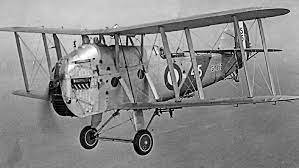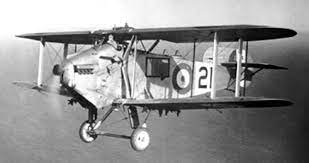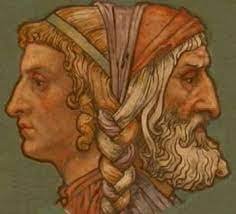-
Posts
5,297 -
Joined
-
Last visited
-
Days Won
78
Content Type
Profiles
Forums
Gallery
Downloads
Blogs
Events
Store
Aircraft
Resources
Tutorials
Articles
Classifieds
Movies
Books
Community Map
Quizzes
Videos Directory
Everything posted by old man emu
-
Here's an idea that might be worth following up. We have been talking about engines that develop their power from burning petroleum distillates. Why not have a look at the possibility of replacing those types with electric motors in propeller-driven aircraft? Obviously, the the research has to go into battery technology, but that is a field that is currently (no pun) producing great leaps forward in electrical power storage. An electric motor isn't affected by air density as the fuel burner is. Therefore you don't need all the ancillary add-ons like carby, exhaust, spark generation system and cooling(?). You could trade those weights for a bigger motor. You could look at using ducted fans instead of the usual propeller. Battery packs might be more resistant to gunfire damage. Let's say that a big aero engine burns 80 gallons of fuel per hour. That means that the logistics of getting fuel from refineries to airfields in distant places have to be overcome. With electric powered aircraft, you only need a electricity generator mounted on a semi-trailer and a companion fuel tanker for the generator. How long would a generator run on 30,000 litres of diesel fuel? If the aircraft were for defensive use, then range would not be such a problem. The Hurricanes and Spitfires of the Battle of Britain only had a range of about 200 nautical miles. That's plenty to defend against an invading force attacking a coast.
-

Graph paper large rolls
old man emu replied to FlyingVizsla's topic in Aircraft Building and Design Discussion
-

Graph paper large rolls
old man emu replied to FlyingVizsla's topic in Aircraft Building and Design Discussion
A bit OTT. The wing rib plan I posted above is only 36 inches long - and I wouldn't dare convert the measurements to metric. Sometimes when building off old plans you have to keep to cubits or things go out of design. You could draw it out using a CAD program, then have an architect office print it up for you. That's what I did. For a few simple CAD jobs you could use one of the free CAD programs. FreeCad is supposed to be the best of these. https://freecadweb.org/ -

Graph paper large rolls
old man emu replied to FlyingVizsla's topic in Aircraft Building and Design Discussion
What is the length of the chord of the aerofoil? That is going to govern how long a piece of paper you want. I plotted this rib from the co-ordinates You don't really need graph paper. Just set a datum line and work from that. This is what I ended up with wing.pdf -

Is the Seamew the Airtruk's grandma?
old man emu replied to Garfly's topic in AUS/NZ General Discussion
When experience gained in WWI showed that the aircraft carrier was an essential component of the 20th Century Navy, the British issued Specification 3/21 for a carrier-based fleet spotter and reconnaissance aircraft. Two companies, Blackburn and Arvo submitted entries. The aircraft were remarkably similar in appearance and could have had roles in a Christmas pantomime as the Ugly Sisters. This is the Blackburn R1 Blackburn and this is the Avro Bison Here's a video about the Blackburn https://www.youtube.com/watch?v=tow1xHV_knI -
Would this be a better place than the earlobe?
-
We don't often get to see in detail the weaponry used for aerial gunnery in WWI. This video shows the American version of the Lewis gun and describes the features which made it functional for aerial use. Of special interest is the way in which the movement of the sights compensated for the movement of the operator's aircraft. The second video shows the gun being used on the ground. The only thing it doesn't show is the removal of the magazine, which is explained in the first video.
-

Australian aviation inventions on TV
old man emu replied to red750's topic in AUS/NZ General Discussion
Alf Traeger was the person who created the pedal wireless, which provided the necessary communication method between those needing help and the RFDS. Sidney Cotton, immediately prior to WWII, used his private plane to take photos of Luftwaffe airfields. In fact on one occasion he was flying around with a high ranking Luftwaffe officer who was virtually sitting on top of Cotton's hidden camera as it took photos. When the war started he established the RAAF's Photo Reconnaissance Unit. He was a bit of an Aussie rogue who would have been at home amongst some of the Corporate crims we know today. -
What as the torque on those cylinder base nuts? 50 N.m or 50 lb.ft?
-
I think that the Aeronca C 3 is such a cute little plane. It reminds me of Bertie, the Aeroplane Jelly plane http://media1.aso.gov.au/titles/ajbertae/ajbertae1_.jpg Here's some more video of G-AEFT flying around Cornwall.
-

Will someone settle up on a bet?
old man emu replied to old man emu's topic in AUS/NZ General Discussion
It seems the experts (physicists) can't even come up an all inclusive definition of "mass". From https://physics.stackexchange.com/questions/192564/why-is-the-definition-of-mass-and-matter-interlinked About the proper definitions, mass actually has three, but these are not very proper too: The inertial mass of an object is its resistance against acceleration by force. The gravitational mass of an object is the object's tendency to be attracted by a gravitational field. The relativistic mass is the mass of the total energy stored in a system, where mass is simply defined by the relation E=mc^2 to be a physical quantity directly proportional to energy, by a factor of c^2=89875517873681760m^2 s^-2 It would appear that when "weigh" something, you are noting its gravitational mass, which is where the F = ma comes in, and your answer is in newtons. When you try to move an object, you are dealing with inertial mass, which is also F = ma, but in this case "a" is not the acceleration due to gravity, 9.81 m/s^-2. It is something less. That's clear if you want to push a car along a flat road. You only have to overcome the friction in the wheel bearings and the tyre contact patch, which is usually taken to be about 0.01 x 9.81 etc. or less in total. The relativistic mass is related to the number of particles (atoms) you have in your lump of matter. Those atoms have the energy, so you can work out the mass if you know the energy released by its fission. Efficiently burning 2100 litres of petrol would produce the same amount of energy as fission of 1 gram of uranium, so I guess this method of determining mass is more theoretical than practical. -
Our duly elected leaders have listened to the experts and committed us to paying billions for underdeveloped jet-powered military aircraft. For those billions we will get a few dozen aircraft, that any belligerent country would aim to destroy in the first few days of an attack on our land. After that, an enemy force could land under the cover of its own airforce. The professional military learns from History, and the best lesson was D-Day where complete air superiority allowed the Allies to direct their attention only at land forces. Shouldn't Australia review the likely type of opposition we would face in the event of an invasion, and seek ways to deal with ground forces from the air? I believe that for the billions of dollars ear-marked for the purchase of a few jet aircraft we could build up a large force of simpler aircraft for anti-invasion work. As a stop-gap measure in WWII, we were able to quickly develop a fighter plane to build our numbers. We were lucky that we quickly received more suitable aircraft to deal with the air war, but those fighters we built still played an important role in the ground war as spotters and attacking ground targets. What were those fighters? The Boomerang. What was it? A medium sized aircraft fitted with a now inefficient engine, but armed with two 20mm cannon and four 303 machine guns and able to carry a small bomb load. While the airframe design could be resurrected, a modern version would need a new type engine - realistically a turbine. Modern weaponry in the form of air-to ground missiles and cannon could be fitted. By aiming for simplicity, aircraft like these could be produced for a fraction of the cost of big, fancy, keeping-up-with-the-Joneses jets. The rigged design of landing gear would better suit these small aircraft to rough, temporary air strips that could be marked out in the event of an invasion and a need to get aircraft close to the front line. Such aircraft have been developed since WWII. One of these is the PA-48 Enforcer. https://en.wikipedia.org/wiki/Piper_PA-48_Enforcer
-

Will someone settle up on a bet?
old man emu replied to old man emu's topic in AUS/NZ General Discussion
I asked Ian to close the original thread. Do you think that if a few of you asked for this thread to be closed, that he would? I think it should as it's going nowhere. -

Will someone settle up on a bet?
old man emu replied to old man emu's topic in AUS/NZ General Discussion
True. I suppose that one's credibility to others depends on the reputation one has earned. By that, I mean that I hope that when the topic is of a serious nature, my reputation is that what I say has merit. On the other hand, I am quite happy to have the reputation for quick wit and repartee in the appropriate place. That means my reputation is like two-sided Roman god Janus Peter clearly identified that I often use the Socratic method to "sell" my line. I suppose that in these busy modern times, people don't want to lounge under an olive tree and philosophise over a flagon of Chian wine (the most prized wines in classical Greek antiquity). People want the sound grab. So one must try to suit the "market". As for those who are happy to engage in a very academic and complex approach to basic physics, rebuttal must be at the same level of complexity as the proposition. My biggest annoyance with the "weight/mass" thing is that no one was prepared to accept that the two words refer to different things. The words arise from different concepts weight (n.): Old English gewiht "weighing, weight, downward force of a body, heaviness," from Proto-Germanic wihti-. The original sense of the Old English verb wegan "find the weight of, measure; have weight; lift, carry, support, sustain, bear; move, was of motion, which led to that of lifting, then to that of "measure the weight of." The older sense of "lift, carry" survives in the nautical phrase weigh anchor. mass (n.): late 14c., "irregular shaped lump; body of unshaped, coherent matter," from Old French masse "lump, heap, pile; crowd, large amount; ingot, bar" (11c.), and directly from Latin massa "kneaded dough, lump, that which adheres together like dough," probably from Greek maza "barley cake, lump, mass, ball," which is related to massein "to knead," from PIE root *mag- "to knead, fashion, fit." -

Will someone settle up on a bet?
old man emu replied to old man emu's topic in AUS/NZ General Discussion
If this was posted in a thread in the sister forum, I would have posted a ROFLMA emoji. However in the climate of this thread such a post is not well received. Please don't throw 100LL onto a fire. -

Will someone settle up on a bet?
old man emu replied to old man emu's topic in AUS/NZ General Discussion
Read your PMs -

Will someone settle up on a bet?
old man emu replied to old man emu's topic in AUS/NZ General Discussion
OK. I give up. Old Man Emu is an absolute dickhead who is not worth entering into discussions with. "No one thought ..." No one ever produced a rebuttal argument. -

Engineering for occupant safety
old man emu replied to old man emu's topic in Aircraft General Discussion
Protection from landing flat as in Thruster's illustration is pretty hard to design into an aircraft. I believe that flat pancake impacts are a little more common in gliders, for reasons I don's know, but they usually cause severe injury to the spine which can result in death. The spine can't handle vertical forces - see "hang by the neck". Impacts of the aircraft at a nose down angle often result in the fracture of the airframe at the firewall, same as heavy landings on the nosewheel. Clearly the fact that there is a large mass attached to the rest of the airframe usually at only four points has some effect. Another common result is that the rear of the fuselage bends due to the tail section compressing into the forward section which has already stopped. -

Will someone settle up on a bet?
old man emu replied to old man emu's topic in AUS/NZ General Discussion
First, Peter, it's Old Man Emu or OME, but thanks for the polite appellation. Secondly, thanks for taking the time to research and post the above response. It is most interesting. Thirdly, it is the nature of this forum for people to add their two cents' worth. It is the nature of forums, and, although a noble thought, is not democratic. Fourth, the thread was closed at my request. Fifth, based on a long history, of similar attacks on what I have said by a certain party, to open another thread to do as you suggest would be an "Open, Sesame" for further attacks. Sixth, other people have had enough of this topic. In my opinion it is because the difference between the scientist's "mass" and the layman's "mass" has not been understood. And when I throw in terms like Avogadro's Number, Planck's Constant and mention the current definition of the kilogram, the level of misunderstanding rises exponentially. Seventh, you have hinted at your academic qualifications, and I, too, have qualifications in science at the baccalaureate level, as well as internationally recognised qualifications in the application of Newton's Laws to daily occurrences. However, no one else has disclosed their training and experience in this field when attempting to rebut what I have said. Therefore, I reluctantly decline your offer. I regret that I have to do that, as it sounds like a really interesting process. With thanks, Old Man Emu -

Engineering for occupant safety
old man emu replied to old man emu's topic in Aircraft General Discussion
Whoa there Neddy! Before we wander off into appropriate materials - which is an appropriate path to take - let's get the skeleton done first, then think about its skin. I've has second thoughts about a geodesic structure. I think that it might be too inflexible for the goal of reducing the magnitude of the Impulse. What we want is for the structure to crumple, but not transfer the Impulse to the cabin area. Perhaps that means putting some sort of cockpit pod inside the fuselage. This is a plan for an Old Timer RC plane that we can use to illustrate some points. It's clear that the fuselage is basically a girder construction with the cockpit. The problem is that the cockpit is located in a space between the girders, which might allow everything forward of it to intrude into that space. -
Yeah. I think it's been done to death.
-
Whys is it that after 120 years, are we still building airframes like T-model Fords? We are still making the basic box kite design that Hargraves used in his experimental work. In the past 60 years, the automobile industry has expended probably billions of dollars to engineer occupant safety into their vehicles. Why hasn't this knowledge been applied to aircraft, especially those at the lower end of the MTOW spectrum? Have a look at pictures of aircraft which have impacted solid objects while having a degree of forward motion. That cuts out those impacts resulting from a flat spin where the whole of the fuselage impacts the ground at the same time. In every one of those pictures you will see that, for front-mounted engined aircraft, there is massive distortion of the front of the aircraft, extending back into the passenger space. This is a sure indicator that the airframe around the engine was very rigid. The rigidity of the front of the aircraft caused the Impulse of the impact to be transmitted through the airframe without diminishing. (Impulse in physics means the change in momentum over a period of time. The longer the time, the smaller the Impulse.) It is the magnitude of the impulse that determines the severity of damage to the airframe and occupants. The research done by the automotive industry has resulted in the change in the design of chassis from the rigid ladder type to the less rigid unibody (monocoque). Of further value has been the application of data obtained from crash tests to design impact absorption (crush zones) which apply the impact forces to deforming the structure, making noise and heat. The data is also used to design construction that diverts the direction of the impulse away from the passenger cage, or prevents the uncrushable engine and gearbox from entering that cage. I know that weight is the enemy of aircraft. Perhaps a solution would be to use the geodetic structure that Barnes-Wallis first applied to the Wellesley and later the Wellington. Barnes-Wallis hit upon a revolutionary structural idea – rather than building an aircraft structure on the principle of a beam, which supports an external aerodynamic skin, he developed a new type of structure which had the structural members formed within the aerodynamic shape itself. This required the structural members to follow the curved outer shape of the fuselage and wings. https://www.barneswallisfoundation.co.uk/life-and-work/geodetic-aircraft-design/ Basically what he did was divide the rectangles that are found in a ladder frame into a lot of smaller triangles. Geodetic :the shortest possible line between two points on a sphere or other curved surface. A geodetic (or geodesic) airframe makes use of a space frame formed from a spirally crossing basket-weave of load-bearing members. By having the geodesic curves form two helices at right angles to one another, the members became mutually supporting in a manner that the torsional load on each cancels out that on the other. In addition to being comparatively light and strong, the fact that the geodetic structure was all in the outer part of the airframe meant that the centre was a large empty space, ready to take payload or fuel. The structure was good for war planes as it could take a lot of damage without breaking. http://ww2today.com/wp-content/uploads/2012/09/Wellington-bomber-fire-damage-595x301.jpg http://www.ww2aircraft.net/forum/attachments/aircraft-pictures/171269d1309098874t-battle-damaged-aircraft-ww2-wellington5.jpg
-

Will someone settle up on a bet?
old man emu replied to old man emu's topic in AUS/NZ General Discussion
That is another way of putting, "Which would you rather have dropped on you, a tonne of feathers or a tonne of bricks?". Two identical objects filled with stuff. Let's consider the objects to be 40 foot shipping containers. The density of osmium is 22610 kg/m3. If the containers are in deep space, we can fairly assume that there is no air between individual feathers, so it is fair to say that we could compress the feathers closer together than we could on Earth. However, it is unlikely that we could compress them to the same density as osmium, so the density of the feathers would be less and so the mass would be, too. It could be done by the use of Newton's law of universal gravitation, which says the attractive force (F) between two point-like bodies is directly proportional to the product of their masses (m1 and m2) and inversely proportional to the square of the distance, r, between them: But since you don't have values for the masses, you have to try something experimental. If you could fix one container in place (the reference container) and bring the other (the target container) within a known distance (r), then you could see which container moved towards the other. If the target container does not move, then you would know that the reference container's gravitational force on the target container was not sufficient to overcome the target container's inertia and move it. Therefore the reference container has the feathers and the target one the osmium. If the target container was the one that moved, then it is the one with the feathers. -
In a number of threads, APenNameAndThatA has been provoking me. You would have to go back through a lot of posts in a number of threads to see all that has been done. I've offered a lot of stuff and links where possible, but instead of making positive contributions or sensible rebuttals he has simply sought to enrage me. I'm sorry that your introduction to this fine and very useful forum has been marred by the antics of one person. Don't think that the standards of the forum are in the gutter. It is a very useful resource and I look forward to your contributions in the future.










